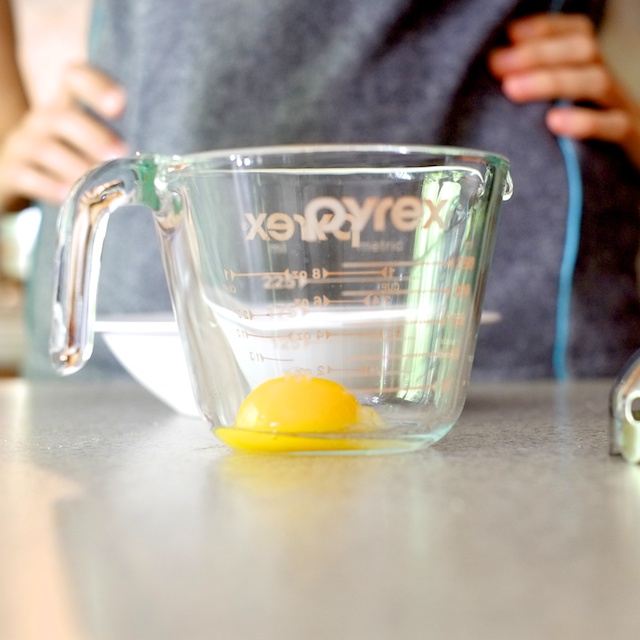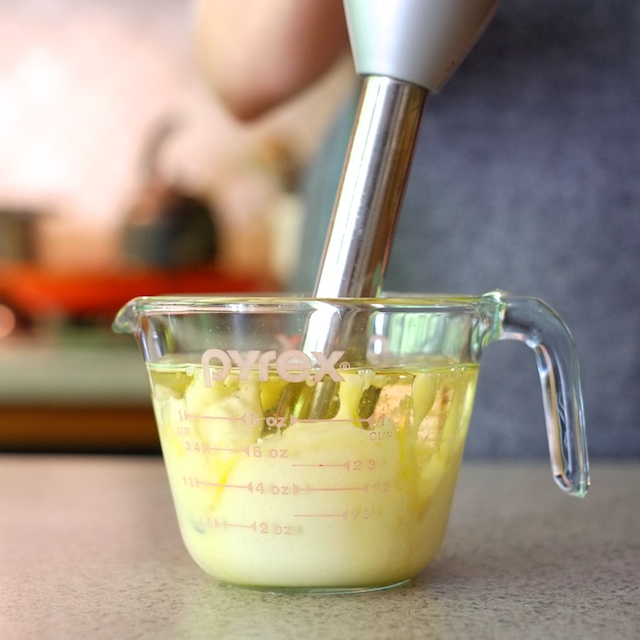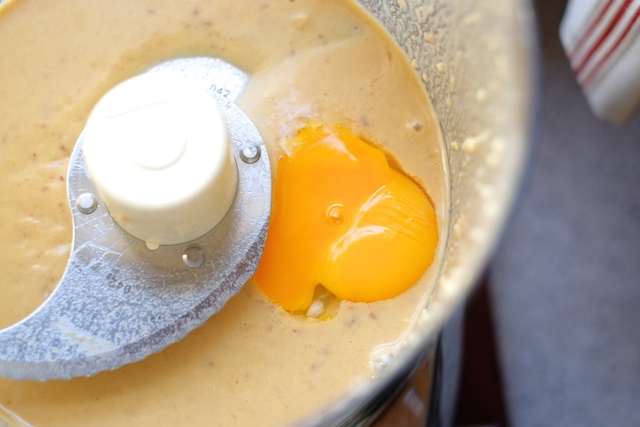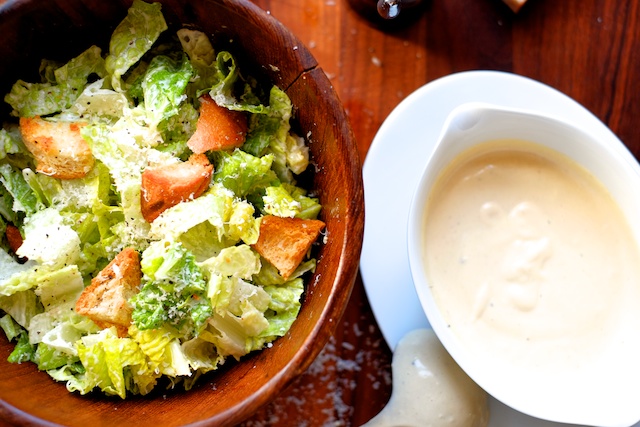We’re in the final phase of the sauce series – huzzah! I’ve been wanting to do this series forever and I’m glad I’ll be able to move the freak on and use it as a reference point in future recipes. This sauce topic can be ironically dry, it’s just so important, it needs to be covered. Brass tacks and whatnot.
Our final sauce-making method is emulsion. The technical definition of an emulsion is a fine dispersion of two liquids which aren’t soluble – which in the culinary world means oil and something watery. So, technically, a plain vinaigrette with just oil, vinegar, salt, and pepper is an emulsion while it’s well shaken, it’s just not a very stable one, since it likes to separate as soon as it’s still.

Stabilizing an emulsion can be done with anything viscous – honey or mustard in a vinaigrette, peanut butter in your thai peanut sauce, or even ketchup in barbecue sauce – but all of these will settle or break over time (to some extent) and require manual re-emulsification. These emulsifications are easy to make and difficult to bungle, but they are just the tip of the iceberg.

The most transformative and temperamental emulsions are made with egg yolks and a lot of fat. The French mother sauce we’re dancing around is hollandaise, but the most ubiquitous emulsion in our pantries is good old mayo.

Handmade hollandaise and mayonnaise are famously difficult to make. The amount of whisking required to aerate the yolks enough to introduce fat, and the stamina required to continue whisking furiously while pouring the merest stream of oil into the yolk – it’s basically heroic. And add too much fat, or simply add it too quickly, and the sauce becomes a broken, sloshy mess. Luckily, somewhere around the 1970’s the food processor was invented. If you have one, you will be able to make mayo on your very first try without any pre-emptive muscle conditioning, and I’ll show you how.

I’m not saying there isn’t any value in making mayonnaise with a trusty analog whisk. I’m sure it’s very educational, and someday my curiosity might compel me to give it a try. But if you aren’t completely entranced by the chemistry of it, there isn’t really a need. Plus, I love food-processor technology. But not as much as mayonnaise. But I still love technology. Always and forever.
Up next, to illustrate (with technology): caesar dressing from scratch and homemade mayo in 30 seconds.